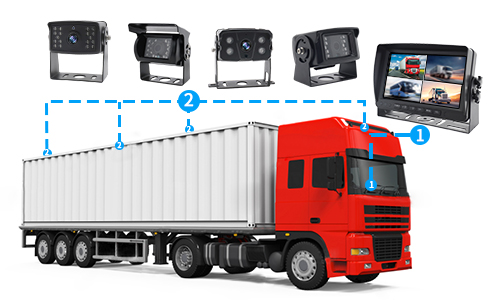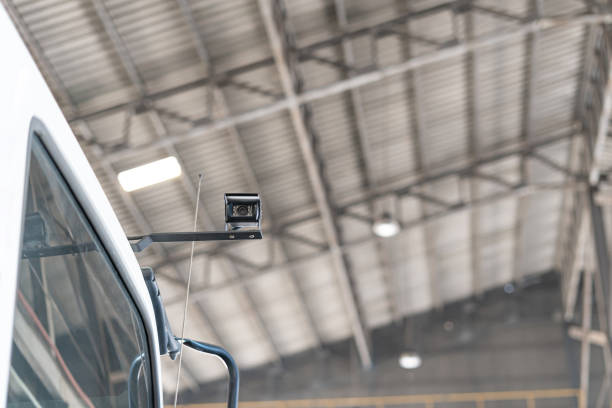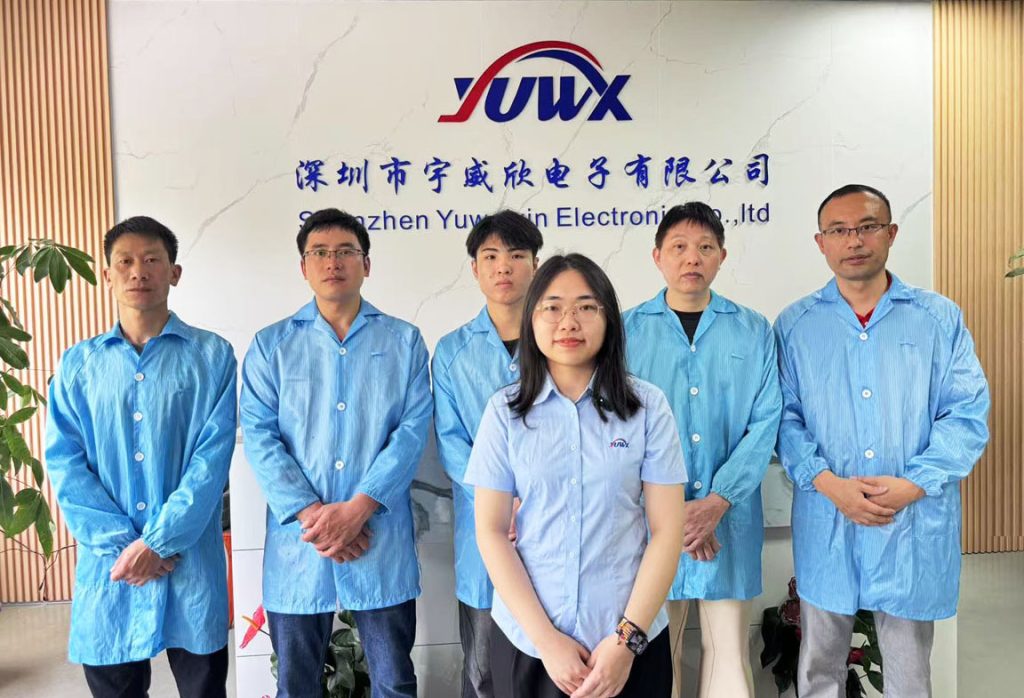Introduction: The Promise of Wireless Car Monitor Systems
Wireless technology has revolutionized a wide range of industries, including automotive systems. One of the most notable advancements is the development of wireless car monitoring systems, which offer convenience, flexibility, and ease of installation. These systems provide a live feed of the vehicle’s surroundings, making them essential for enhancing safety, reducing blind spots, and assisting with parking.
However, as with any technology that relies on data transmission, latency—or the delay between signal transmission and reception—becomes a critical factor. The performance of wireless monitoring systems, particularly in vehicles, depends on how well latency is minimized. In this article, we will delve into the intricacies of wireless car monitoring systems, addressing the question: Will wireless car monitoring systems have low latency due to being wireless? We will explore how wireless technology impacts the functionality of rearview and surveillance monitors, and whether the challenges of latency can be overcome effectively.
Understanding Latency in Wireless Car Monitoring Systems
Latency is the time delay that occurs between the moment a signal is sent and when it is received and processed. In the context of wireless car monitor systems, latency directly affects how quickly a live video feed from a camera is displayed on the screen. In an ideal setup, the delay should be minimal, providing real-time footage that allows drivers to make split-second decisions.
Wireless monitoring systems depend on radio frequency (RF) signals to transmit video data from the cameras to the display unit. These signals, while convenient, are subject to a range of factors that can introduce latency, such as signal interference, bandwidth limitations, and network congestion. Thus, the challenge lies in achieving the delicate balance of maintaining high-quality video feed while minimizing latency.

Factors Affecting Latency in Wireless Systems
Several factors contribute to latency in wireless car monitor systems. Understanding these factors helps manufacturers design more efficient and effective systems that deliver real-time video with minimal delay. Below are the primary factors that influence latency:
1. Signal Interference and Range
Wireless signals are susceptible to interference from obstacles like metal, walls, and other electronic devices. For car monitoring systems, this means that the signal between the camera and display can be obstructed or distorted by the vehicle’s structure or nearby traffic. The longer the transmission range, the greater the chance for signal degradation, leading to increased latency.
2. Bandwidth and Data Compression
The quality of the video feed is directly related to the amount of data being transmitted. Higher resolution feeds require more bandwidth, which can result in higher latency if the network cannot handle the data transfer quickly enough. To combat this, data compression techniques are often employed. While compression reduces the amount of data that needs to be transmitted, it can introduce additional delays as the video data must be compressed and decompressed in real-time.
3. Transmission Technology
Different wireless transmission technologies come with varying performance characteristics. For instance, Wi-Fi, Bluetooth, and cellular networks each have different levels of efficiency when it comes to handling data. Wi-Fi is commonly used in modern vehicles due to its high bandwidth capabilities, but it is still subject to interference from other wireless devices and environmental factors. Meanwhile, newer technologies like 5G and dedicated short-range communications (DSRC) are promising because of their low latency and high-speed data transfer capabilities.
4. Hardware and Software Processing
Latency can also arise from the hardware and software involved in encoding, transmitting, and decoding the video data. If the car monitoring system is equipped with low-performance processors or inefficient software algorithms, the delay between capturing and displaying video can be significant. Manufacturers focus on optimizing both hardware and software to reduce this processing time, resulting in quicker video feeds with minimal delay.
Achieving Low Latency in Wireless Car Monitoring Systems
While the factors outlined above pose challenges, significant advancements have been made in overcoming these latency issues. Manufacturers are using a combination of technology, design strategies, and system optimizations to ensure that wireless car monitor systems deliver real-time or near-real-time video feeds. Here are the main approaches being used to achieve low latency:
1. Utilizing Higher Bandwidth Technologies
To ensure faster data transmission with minimal delay, many modern wireless systems are moving toward 5G networks. Unlike earlier technologies, 5G offers ultra-low latency and high-speed data transfer, making it ideal for applications like real-time car monitoring. This enables live video feeds to be transmitted without significant delay, even in high-density environments or while the vehicle is in motion.
2. Advanced Data Compression Techniques
Newer data compression techniques are being employed to reduce the time spent encoding and decoding video feeds. By using more efficient algorithms, manufacturers are able to compress high-quality video data without introducing significant delays. H.265 (HEVC) compression, for example, reduces file size while maintaining video quality, which helps minimize latency during transmission.
3. Optimized Network Protocols
Optimizing communication protocols can also reduce latency. For example, low-latency transmission protocols such as UDP (User Datagram Protocol) are often preferred over TCP (Transmission Control Protocol) for real-time video streaming, as UDP avoids the delay caused by error checking and retransmission. Furthermore, direct communication channels that bypass traditional network routes can be implemented to ensure quicker data transmission between the camera and the display unit.
4. Edge Computing and Local Processing
In some systems, edge computing is used to perform local processing of video data, reducing the need for data to travel long distances to a central server. By processing data at the source (i.e., on the camera or in the vehicle itself), the system reduces the transmission time, allowing for near-instant video display. This also helps alleviate network congestion, further reducing latency.
5. Dedicated Short-Range Communication (DSRC)
For short-range wireless communication, DSRC offers a solution that enables ultra-low latency transmission. DSRC is designed for use in transportation systems, offering fast and secure communication between vehicles and infrastructure. This technology minimizes delay and allows for the real-time exchange of information between monitoring systems and other connected vehicles or sensors.

Benefits of Low Latency in Wireless Car Monitor Systems
Achieving low latency in wireless car monitor systems is crucial for several reasons. The primary benefit is enhanced safety. A system with low latency allows drivers to make quicker decisions, such as avoiding obstacles, pedestrians, or other vehicles. The ability to see real-time video data without delay can prevent accidents and provide additional confidence when reversing or parking in tight spaces.
In addition to safety, low-latency systems provide greater accuracy and improved driver experience. The video feed from a high-performance rearview camera should match the movements and positioning of the vehicle almost instantaneously. Delays in video feedback could confuse, making it harder to judge distances accurately and increasing the likelihood of collisions.
Furthermore, low-latency wireless car monitor systems are essential for autonomous vehicles and driver assistance systems. These technologies require seamless data transmission to make rapid, real-time decisions. High latency could undermine the effectiveness of autonomous systems by introducing critical delays in response times.
Conclusion: The Future of Wireless Car Monitor Systems
The question of whether wireless car monitor systems will experience low latency due to their wireless nature is complex. While wireless technology introduces potential delays, advancements in 5G networks, data compression techniques, optimized protocols, and edge computing are significantly reducing latency. As technology progresses, wireless car monitoring systems will likely become increasingly capable of providing real-time video with minimal delay.
The development of low-latency systems is essential for maintaining safety, improving driver confidence, and supporting the transition to autonomous vehicles. As more advanced communication technologies like 5G and DSRC become mainstream, the future of wireless monitoring systems looks increasingly promising, enabling safer and smarter vehicles.
For YUWX, the focus remains on delivering high-quality, low-latency wireless car monitor systems that meet the evolving demands of the automotive industry. As new technologies emerge, the systems will continue to improve, ensuring that safety and real-time awareness remain at the forefront of vehicle design.








